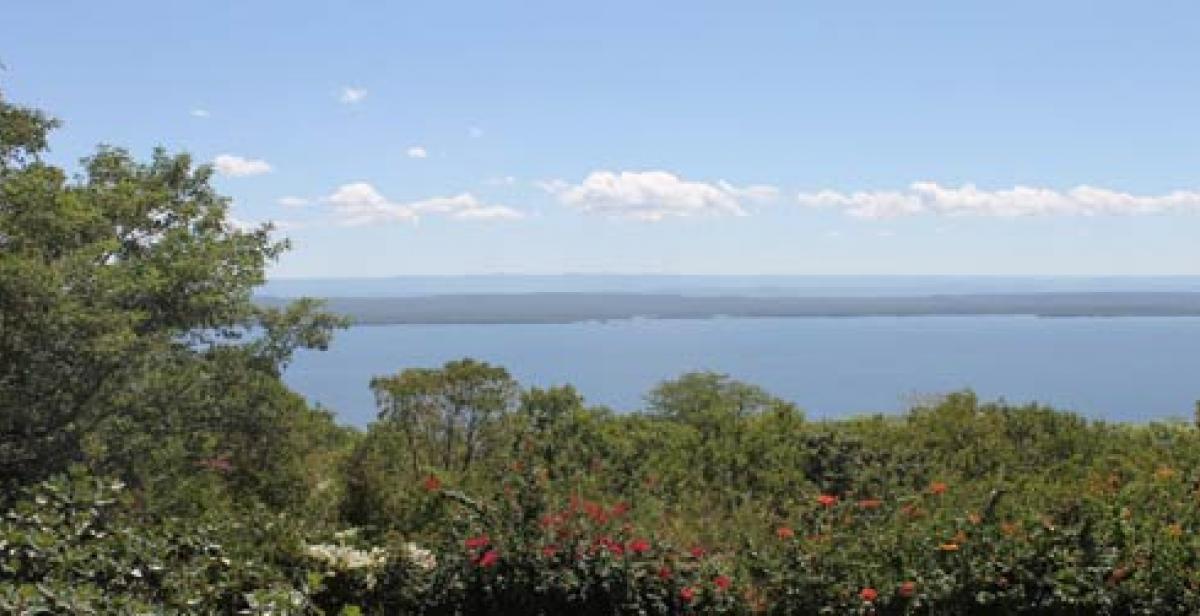Our first experience of the BaTonga’s culture and history was on our tour of the BaTonga Museum situated in the centre of Binga town in Zimbabwe. We gained valuable knowledge of the BaTonga people and learnt much about their livelihoods based along the banks of the River Zambezi, now known as Lake Kariba, situated in the north west of the country.
Well known as a minority language speaking tribe, the Tonga people lived on either side of the great river Zambezi. The Tonga’s culture, language and ancestral beliefs can be distinguished from the rest of Zimbabwe’s population, which constitutes mainly Shona and Ndebele speaking people.
The river Zambezi was the life-source of the Tonga people, providing fertile soils for the occupants granting harvests. We learnt a great deal about the traditional life-style of the Tonga that prepared us for the cultural exchange ahead. The museum’s detailed insight into Tonga history revealed the extent to which the environment and climate played an integral role in sustaining the livelihoods of BaTonga in the region. The role that the Zambezi River played in supporting life and cultural exchange either side of the river was integral to the preservation of the Tonga’s way of life.
By 1959 the completion of Kariba Dam across the Zambezi River hailed the end of the River Tonga’s way of life and ‘splendid isolation’ as they were forced to inhabit an area possibly the most arid and inhospitable in Zimbabwe. Around 57,000 BaTonga were dispossessed and relocated to land that was neither viable for food production nor for the keeping of livestock. The dispossession of land rights suffered at the hands of the BaTonga helped shape much of the contemporary development issues prevalent among the BaTonga today. The day we learnt all of this it became very clear that these remarkably resilient people had endured and adapted to the tragic events that forced them to flee their homes and start a new life along the banks of the River Zambezi.
Our journey into the Tonga’s traditional way of life continued with our visit to a town renowned for its Tonga heritage and culture. The next step in our journey would take us to a village called Siabbanga to directly engage and experience the Tonga’s lifestyle. Siabbanga, a village predominately made up of Tonga speakers, about 23 kilometres away from Binga centre, gave us an authentic feel of Tonga culture and traditional practices that defined the BaTonga people. Rarely did the village community experience the entry of foreigners willing to listen and learn. We were greeted with the warmth and affection that old friends would share when reuniting.

Upon our arrival we were formally greeted by the head of the homestead and one of his two wives. Shortly after our arrival food was served to the men and boys on a table known as a “chipala”. The ladies amongst us would kneel down when serving food, a tradition that did not sit comfortably for the international female volunteers, though they pulled through. Females were designated a mat to sit on while they had their meals served separate from the men. In the morning, tasks were assigned according to gender; the women and girls woke up early in the morning to fetch water from a borehole 1800 metres away from the homestead. This gave the girls first-hand experience of the strength and resilience of the Tonga women. The easy way to transport the precious liquid was by head for most women, seen by the 20 litre buckets full to the brim balancing on their heads as they headed back in different directions. For the internationals it was a new and interesting experience, as one was heard saying “I think I bruised my head”.


The boys were then tasked to undertake activities that men would traditionally undertake in the village, namely chopping firewood for cooking and the milking of cows. In the afternoon all the volunteers went to the fields to harvest crops which were sown by the previous group of ICS volunteers. The next morning the boys milked the cattle with the help of two female international volunteers. The few days we spent in Siabbanga village not only taught the traditional ways of the BaTonga but the strength and endurance that one requires getting by in such conditions. This is a testament to the vitality and resilience of a people that have successfully managed to prosper and thrive on the margins.


Written and prepared by: Leslie Tinanashe Ndlovu and Tane Rogers- Eirug
Photos by: Calton Siatimba, Oona Matheson and Jo Palfreman
Photos:
1: Part of the lake Kariba view at Present day
2: Typical Tonga Hut known as Ingazi in the Homestead
3: Jo, Rosie and Oona arriving with buckets of water
4: Calton chopping firewood
5: Oona milking
6: Tonderai milking the cow



